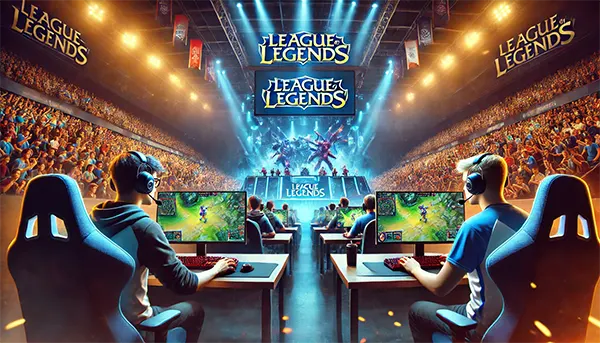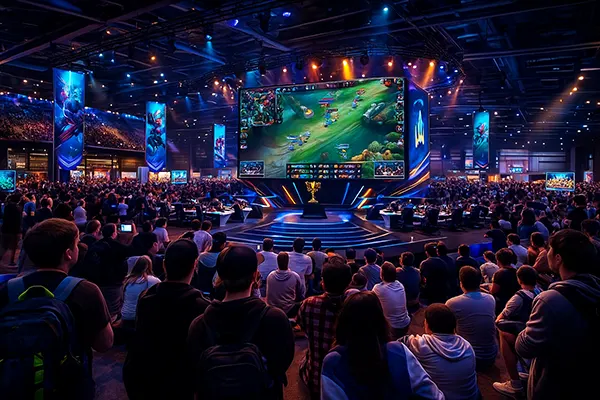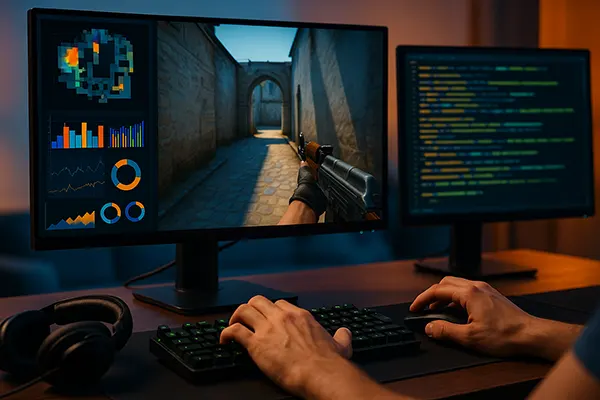LTA North and LTA South: Viewership Debut – Early Successes and Challenges for the New Leagues

The world of professional League of Legends has undergone significant changes in North and South America with the introduction of the LTA North and LTA South leagues. These new leagues have replaced the long-standing LCS and CBLOL, marking a pivotal shift in the competitive scene. Riot Games aims to optimise the esports ecosystem by focusing on top-tier teams while filtering out those with less success or popularity. With the first round of matches now behind us, how have these changes impacted viewership? Let’s take a deep dive into the early results from a viewership perspective.
Early Successes of the LTA North and South Leagues
The debut of LTA North and South has been met with both excitement and cautious optimism. Riot Games’ decision to streamline the competitive scene by consolidating top teams into these new leagues has sparked a renewed sense of hope for the future of esports in these regions. With the first matches in the books, both regions have demonstrated solid viewership, showcasing the potential for growth. While it’s still early days, the success of these first few rounds could set the tone for future seasons, especially with the promise of higher-level competition and improved fan engagement.
LTA North Viewership Performance
LTA North 2025 Split 1’s opening weekend performed surprisingly well, generating over 720,000 Hours Watched (HW). With an average of 98,102 viewers per broadcast and a peak viewership of 148,603, the league’s debut surpassed expectations. In particular, the match between FlyQuest and Shopify Rebellion garnered significant attention, especially with the involvement of popular community caster Charles “moistcr1tikal” White Jr. This highlights the increasing influence of streamers in the esports ecosystem, a trend that Riot Games has embraced to expand their reach beyond traditional broadcasts.
Community casting, which has become a staple of North American esports, played a crucial role in driving viewership. The influence of big-name streamers such as moistcr1tikal and Disguised Toast brought a fresh dynamic to the league’s presentation. It’s clear that esports fans are gravitating towards personalities they trust and connect with, rather than just the official league broadcasts. While this is a promising development for LTA North, the long-term impact of community-driven content remains to be seen.
Viewership Numbers and Community Impact
Despite the success of the opening matches, LTA North and South face the ongoing challenge of competing with the established giants of the esports scene, such as the LEC and LCS. These leagues have built large, loyal audiences over the years, and it will take time for LTA to build a similar following. However, the debut of LTA North and South shows promising signs, particularly with their simplified season format and focus on high-level competition.
One of the most notable aspects of the first round of LTA’s competition was the significant role of community casting. In both LTA North and LTA South, fan-driven broadcasts have proven to be just as popular as the official streams. This is a trend that reflects the growing power of streamers in shaping the narrative of esports events. The inclusion of popular figures and personalities is something that could help build a more personal connection between players, teams, and fans, which could ultimately lead to greater viewership in the long run.
LTA South Viewership Breakdown
LTA South 2025 Split 1 has seen a more established fanbase in the form of CBLOL fans transitioning to the new league. With over 1.9 million Hours Watched (HW) and an average of 140,557 viewers across broadcasts, LTA South’s first round showed that the region’s esports community is highly engaged. The peak viewership of 254,464 during the paiN Gaming vs LOUD match confirmed the region’s deep passion for League of Legends and its top teams.
However, there were some notable changes in LTA South’s broadcast structure. In the past, CBLOL was predominantly in Portuguese, but the addition of Spanish and English broadcasts opened the door to a wider audience. This shift not only catered to a more diverse range of viewers but also aligned with the growing number of Spanish-speaking teams joining the league, such as Isurus Estral and Leviatán. The introduction of these broadcasts has added a layer of complexity to the region’s viewership numbers, with language diversity playing a crucial role in shaping the league’s future.
Challenges Faced by LTA Leagues
While the debut of LTA North and South has been relatively successful, it is not without its challenges. The transition from CBLOL and LCS to these new leagues is bound to take time, and Riot Games will need to ensure that the competition remains fresh and exciting in order to maintain viewership. One of the biggest obstacles the leagues face is the ever-present competition from other well-established esports leagues like the LEC, which continue to dominate in terms of global viewership.
Additionally, while community casting has contributed positively to the viewership numbers, there is always the risk of overreliance on these personalities. Riot Games will need to balance fan-driven content with the professional broadcasting of the events to ensure the leagues are seen as legitimate and competitive on a global scale. The hope is that, over time, the LTA leagues will build a loyal and dedicated fanbase, allowing them to break free from the shadows of their predecessors.

Language and Regional Dynamics in LTA South
In LTA South, the shift towards Spanish and English broadcasts has been an important step in broadening the league’s reach. This change has attracted a new audience, including fans who previously followed the LLA and other Latin American leagues. It’s clear that the inclusion of multiple languages is a strategy to capture a wider audience and make LTA South more accessible to diverse esports communities. However, this shift also presents challenges in maintaining the core identity of the league, as Portuguese-speaking fans may feel that their language is being overshadowed. It will be important for Riot Games to continue catering to the diverse fanbase while also retaining the league’s cultural roots.
Despite these hurdles, LTA South has made significant strides in attracting Spanish-speaking viewers, and the future of the league looks promising. The dynamic nature of esports means that these leagues must continuously adapt to the changing landscape, but with a strong start in terms of viewership, there is a real chance for long-term success.
Conclusion: A New Era or a Slow Burn?
The LTA North and LTA South leagues have made a strong debut, and while the first round of matches has been successful, there are still significant challenges to overcome. These new leagues have breathed fresh life into the North and South American competitive scene, but whether they can maintain this momentum in the long run will depend on how well they can engage and grow their audiences. With the addition of community casting, new broadcasting strategies, and a more streamlined competition format, the leagues are well-positioned for success. However, only time will tell if they can reach the heights of their predecessors like the LCS and CBLOL.
The future of esports in North and South America looks bright, and as the LTA leagues continue to evolve, fans will be keeping a close eye on how these leagues adapt to the changing needs of the global esports ecosystem. For now, the debut of LTA North and LTA South offers hope for the future, and the early success in viewership suggests that these leagues could play a major role in the esports scene for years to come.



